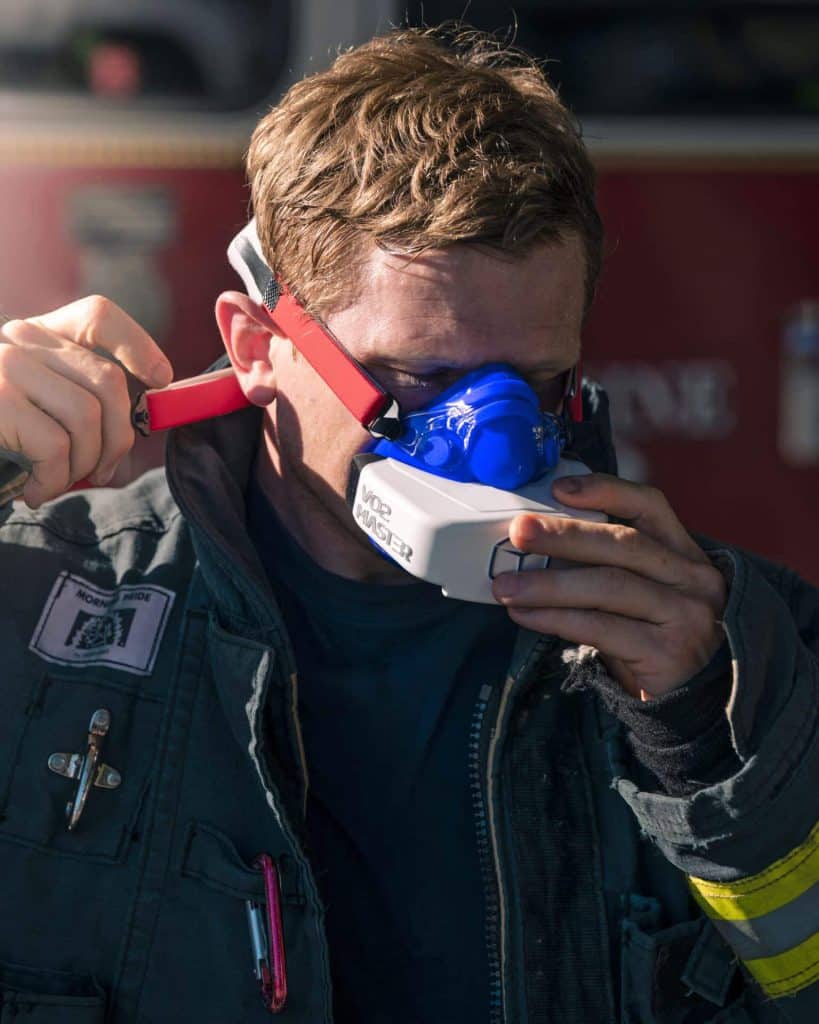VO2 Master Testing for Team Sport Athletes: Managing Fatigue and Optimizing Recovery In-Season
Elite teams win not just with skill, but with recovery. Portable VO2 Master testing lets coaches and performance staff measure fatigue, personalize training loads, and optimize recovery throughout the season. Discover how metabolic insights keep athletes fresh, focused, and playoff-ready.
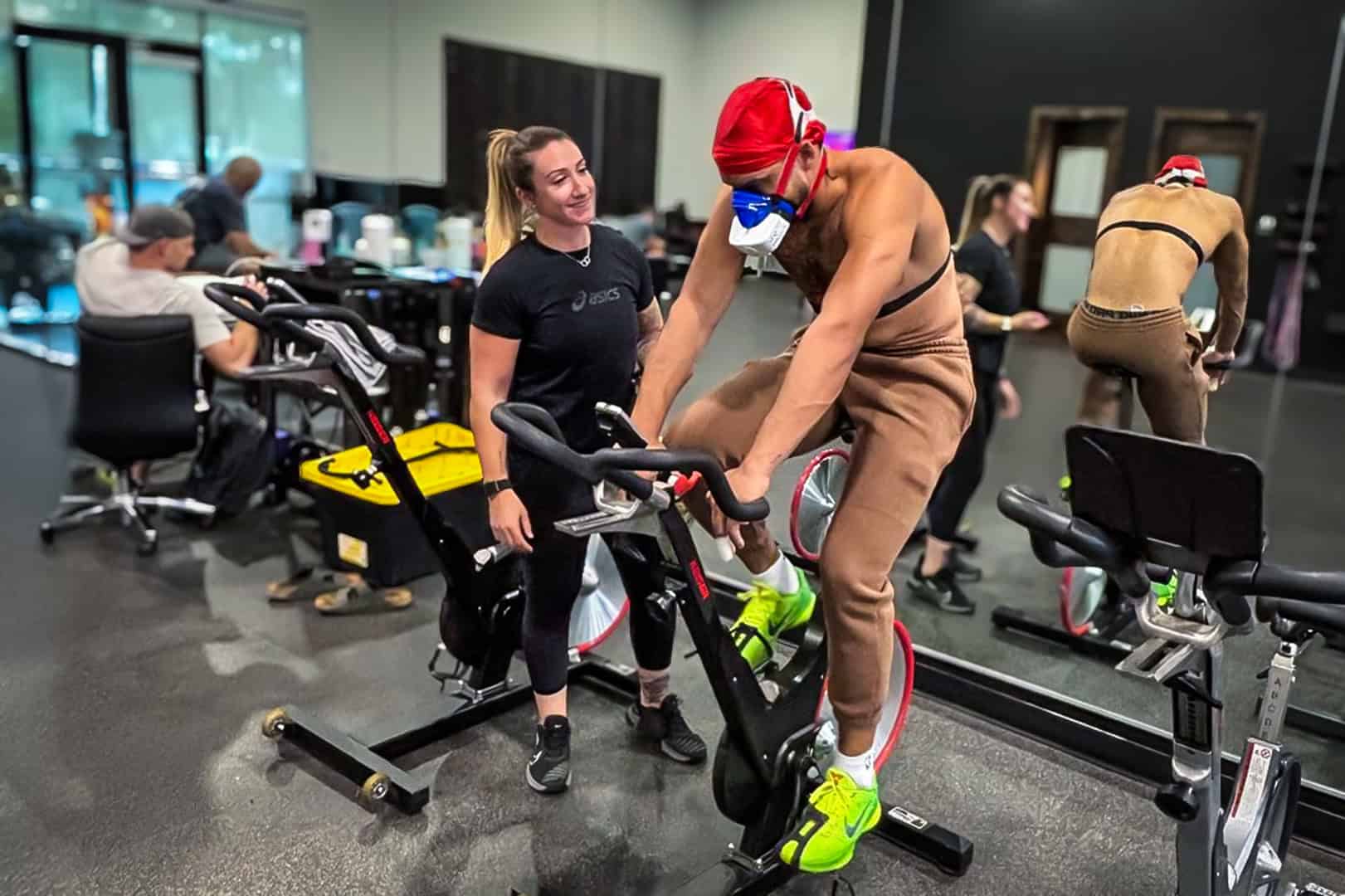
For athletes in basketball, football, and hockey, the start of the season brings energy, intensity, and packed schedules.
It means games stacked close together, long travel days, and constant performance demands.
Once athletes are well into the season, fatigue can set in, and that’s where teams often see the difference between making the playoffs or not.
Winning teams are made up of athletes who can repeat high-intensity efforts, recover quickly between games, and avoid breakdowns across a long season.
This is where metabolic testing and personalized training become a competitive advantage.
By measuring maximum oxidative consumption (VO2), ventilatory thresholds, and recovery capacity, team staff can identify early fatigue, personalize conditioning, and sustain performance when it matters most.
Recovery Capacity: The Hidden Edge in Intermittent Sports
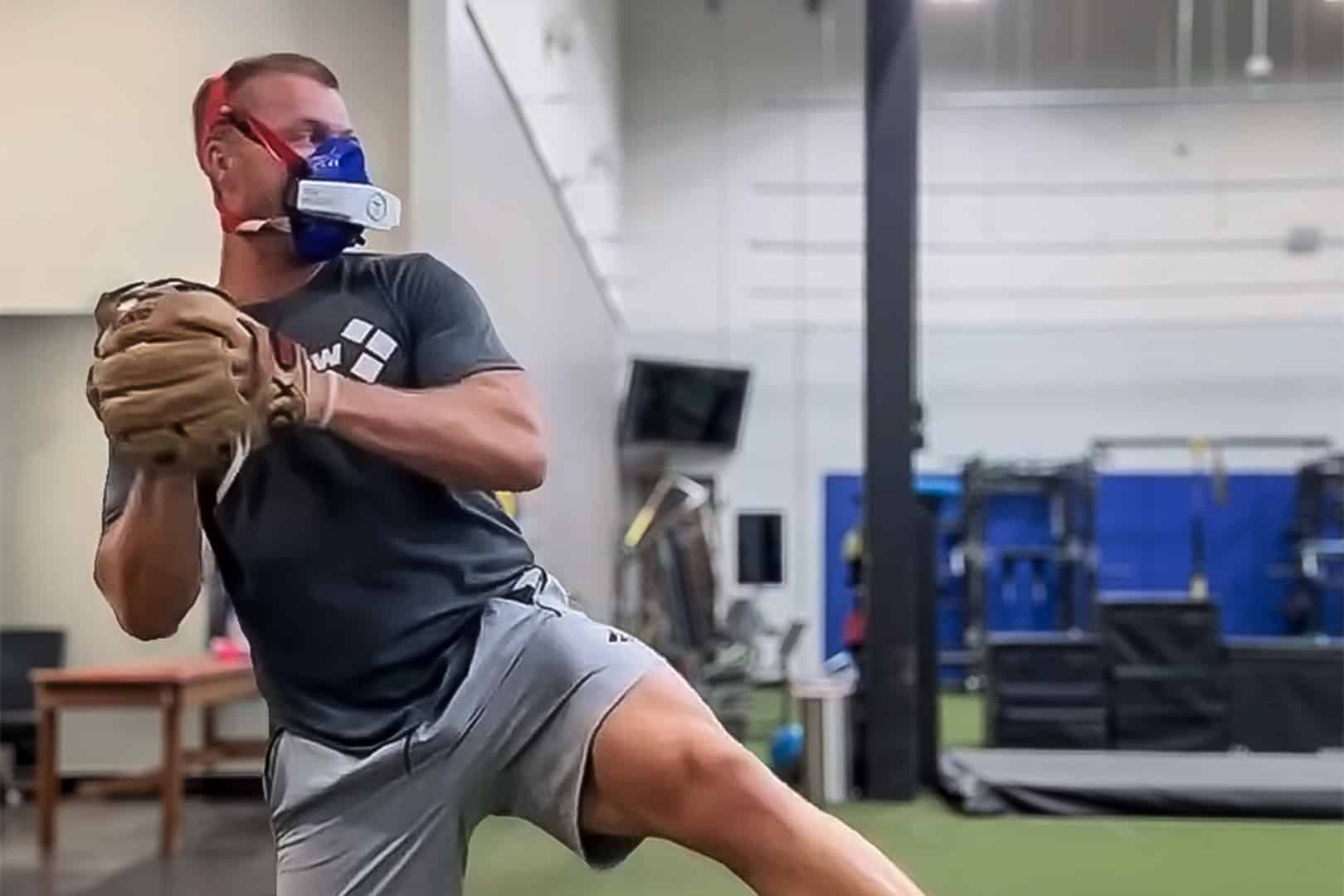
Intermittent sports such as baseball, basketball, football, and hockey involve repeated sprints, collisions, and explosive movements.
Behind every burst of speed is a recovery phase—the short moments on the bench, between plays, or in timeouts when the body works to restore energy.
Andrew Hauser, Founder of Continuum High Performance, is a strength coach and athletic trainer who works with pro athletes in numerous sports, including the NFL and MLB.
He explains:
“The recovery phase rep to rep is where we spend much of our time; it’s this repeatability that makes an athlete sustainable in their sport. When we can identify what their respiratory system may be doing, it gives us insight into better training solutions; delaying fatigue to give them a bigger advantage over their opponent.”
Athletes with a higher VO2 Max (the maximum amount of oxygen their body can use during exercise) recover faster in those windows.
That recovery advantage translates into:
- Faster repeat sprints: Maintaining explosiveness across shifts, periods or quarters
- Less late-game fatigue: Sharper execution in overtime or final minutes
- More mental clarity under pressure: The ability to recover reduces overall stress, supporting decision-making
Coaches and trainers often see elite players in hockey and basketball maintain VO2 Max values in the 50–60 ml/kg/min range. Below that, fatigue arrives earlier, recovery is slower, and performance becomes harder to sustain.
Monitoring Fatigue and Recovery In-Season
In pre-season, teams can push hard with conditioning blocks. But once the schedule starts, the focus shifts from building fitness to preserving it while avoiding burnout.
That’s where VO2 testing steps in. Portable metabolic analysis allows coaches to monitor how well athletes are holding onto their conditioning during the season.
With regular testing, teams can:
- Spot declining recovery capacity early before athletes show visible fatigue
- Assess recovery strategies to see whether sleep, nutrition, or active recovery are truly working
- Prevent non-functional over-reaching and overtraining by identifying when the athlete is exhibiting a trend of maladaptation.
Traditionally, this type of testing was limited to lab settings, which made it impractical during a busy season. But with VO2 Master’s portable technology, athletes can be tested throughout the season, even during normal practice sessions—no disruption required.
Ventilatory Thresholds: The Data Coaches Really Need
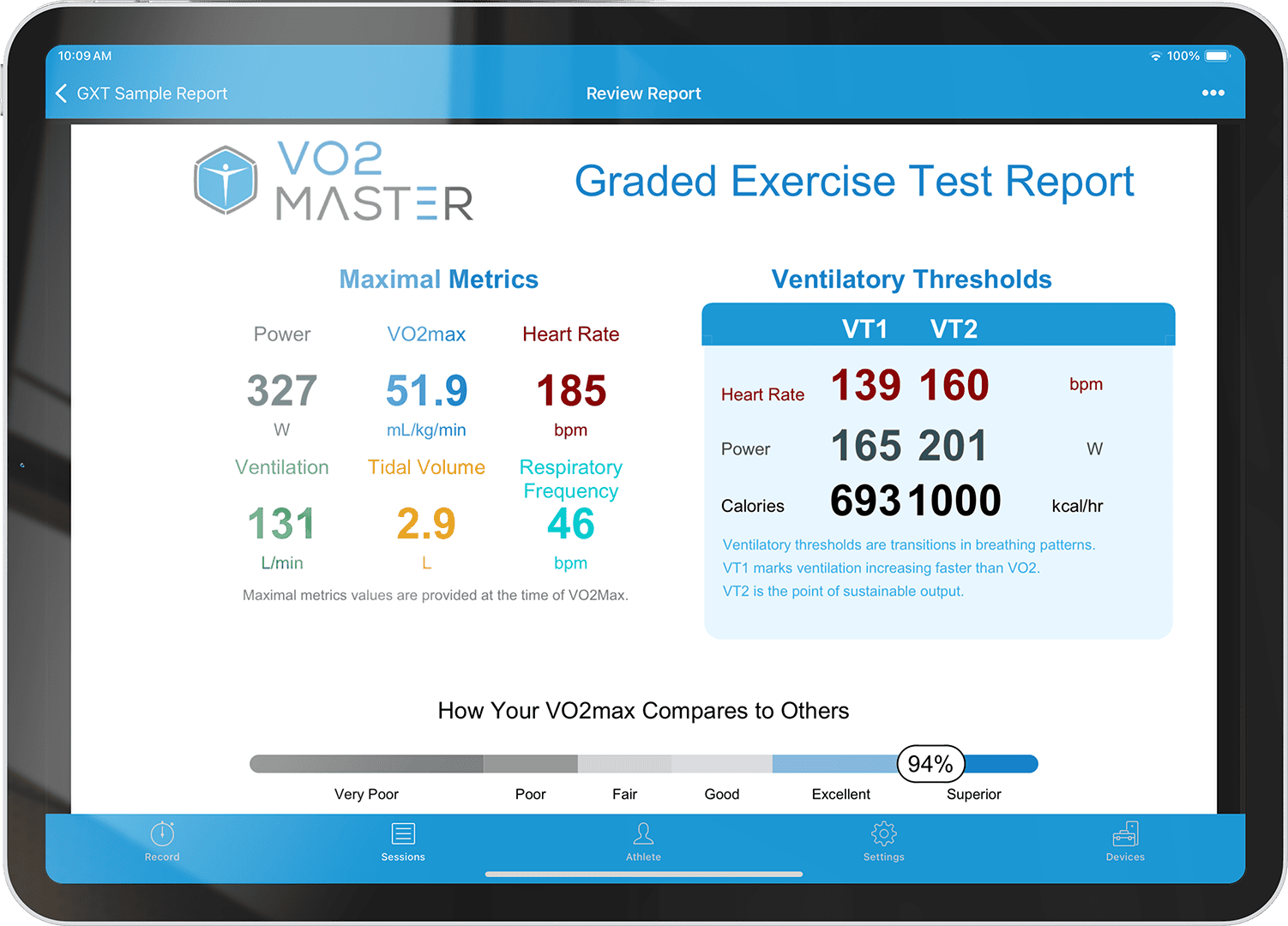
While VO2 Max is important, the Ventilatory thresholds (VT1 and VT2) allow an evaluation of individual efficiency across the entire metabolic spectrum
- VT1: The point where there is a shift to increased reliance on carbohydrates/glucose (glycolysis) for energy production. Prior to VT1, the primary fuel source will be fatty acids. Below VT1, exercise should be sustainable with ease. Above VT1, exercise becomes more intensive.
- VT2: Up to VT2, metabolic byproducts, such as lactate, can be removed at the same rate at which they are produced. Beyond VT2, a buildup of hydrogen ions results in an eventual slowing of muscle contractions, and subsequently, lactate levels will be elevated.
For team sport athletes, these thresholds tell coaches exactly where each athlete should train for different goals.
Instead of using generic formulas like “220 minus age” to set heart rate zones, coaches can prescribe conditioning that matches the athlete’s physiology and sport:
- Zone 1: <90% of VT1. Recovery intensity that athletes can use for ‘flushing’ following highly intense efforts to expedite recovery.
- Zone 2: 90-100% of VT1. Normally, sessions in this zone are steady state and prolonged. They are utilized to set up the physiological ‘structures’ that are needed to enhance recovery (e.g., increased mitochondria, monocarboxylate transporters which facilitate the lactate shuttle, increased capillary density to improve the flow of oxygenated blood to working muscles).
- Zone 3 and 4: Zone 4 = 95-100% of VT2. These zones are primarily used for endurance training and provide many of the benefits of zone 2, but at a higher energy cost. Endurance athletes will train often in these zones as they will represent their ‘race pace’. Intermittent athletes often unintentionally drift into these zones, which have a high energy cost and can result in the accumulation of fatigue that can interfere with performance in other training sessions (e.g., strength and power work).
- Zone 5: >VT2. This zone is primarily used for either long or short HIIT (High Intensity Interval Training). Long HIIT (3-5 min repeats) is highly beneficial to increase VO2 max. Shorter HIIT (20-90 seconds) can be used to improve buffering capacity (Fatigue resistance) during highly intense efforts.
This level of precision eliminates guesswork. No more one-size-fits-all drills. Every player trains at the intensity that maximizes their benefit while minimizing risk.
Translating Data into Game-Day Performance
What does all this mean when the whistle blows? Here’s how it breaks down for specific sports:
- Hockey: Players with higher oxidative capacity recover faster during short bench rests, coming back sharper for the next shift.
- Basketball: Athletes sustain effort deeper into the fourth quarter and overtime, where games are often decided.
- Football: Linemen and skill players alike recover faster between plays, maintaining explosiveness across long plays.
In short: better recovery capacity means more repeatable power, fewer late-game drop-offs, and smarter decisions under pressure.
Practical Example: VO2 Testing in Action
To help bring this concept to life, Andrew Hauser shares a real-world example.
Consider a hockey player entering mid-season fatigue. Their VO2 test reveals a lower minute ventilation (volume of air moved in a minute) when compared to other hockey players.
If this athlete is successful on the ice at a low Ve, it means that an improvement in Ve only increases their performance potential. This must be developed, and as their Ve improves, it will decrease the toll that competition takes on them over the course of the season.
Instead of pushing more high-intensity work, the strength and conditioning coach prescribes work that will improve and increase oxygen delivery during the season.
Elite and professional athletes spend their competitive seasons utilizing oxygen, with the opportunity to improve the delivery (recovery) of oxygen to help keep them fresher and less fatigued during the year.
Smarter Recovery Creates Stronger Teams
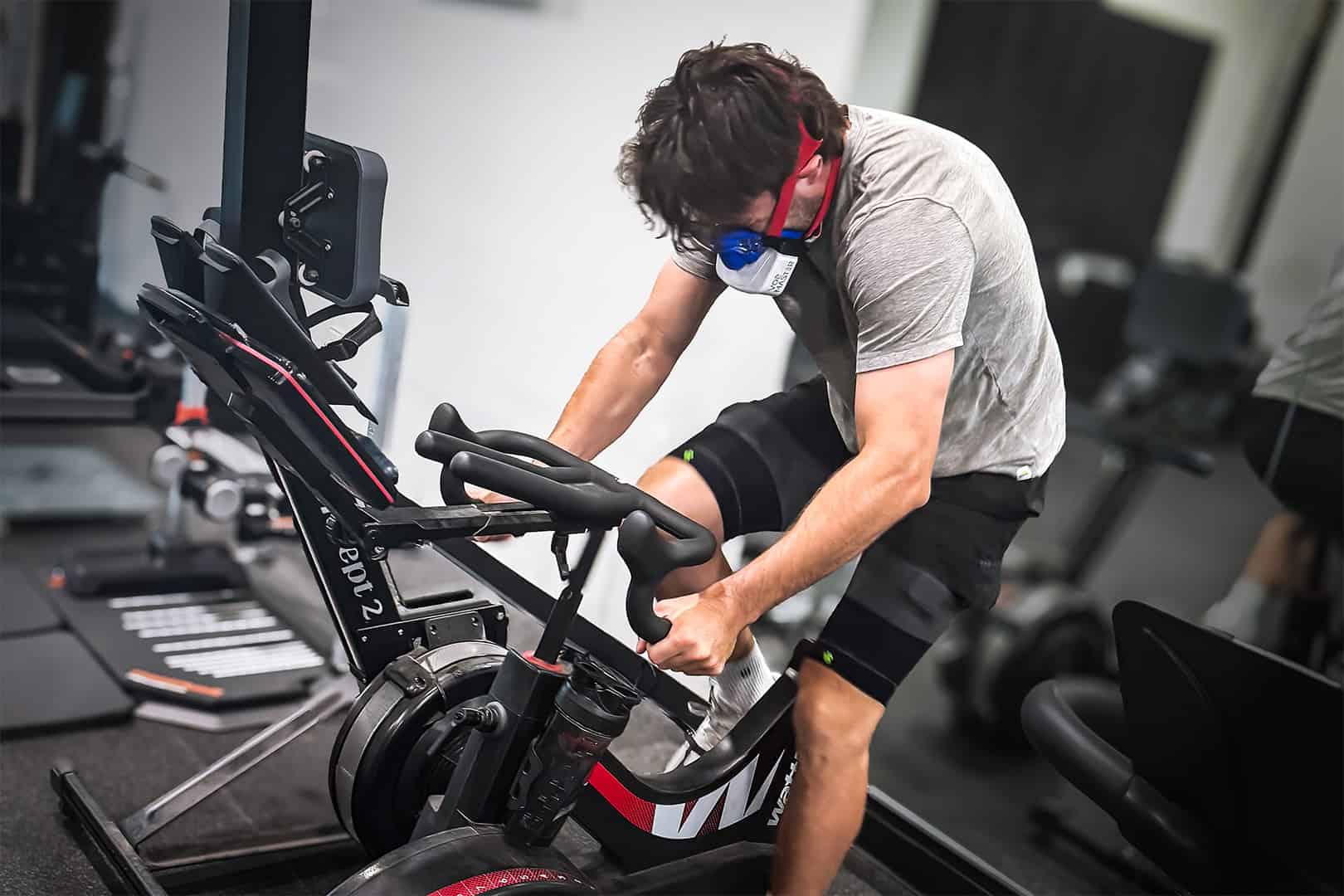
In-season success requires repeatable performance under relentless schedules. VO2 Master testing equips teams with the insights they need to:
- Preserve oxidative capacity.
- Personalize conditioning loads
- Monitor fatigue before it turns into performance decline
- Support faster recovery between games
With VO2 Master’s portability, metrics can be gathered indoors or outside, home or away— giving coaches and athletes actionable data without taking time away from training or competition.
In basketball, football, and hockey, the difference between winning and losing often comes down to who recovers best. Metabolic testing gives teams the science to help manage fatigue, optimize readiness, and keep athletes performing at their peak all season long.
Written by: Nancy Phillips, Kinesiologist, MBA.
Quotes, images, and athlete example provided by Andrew Hauser, Founder, Continuum HP.
